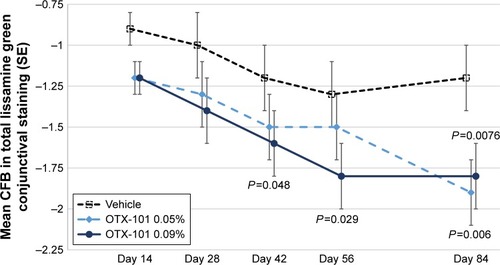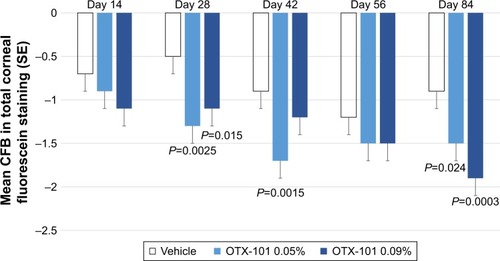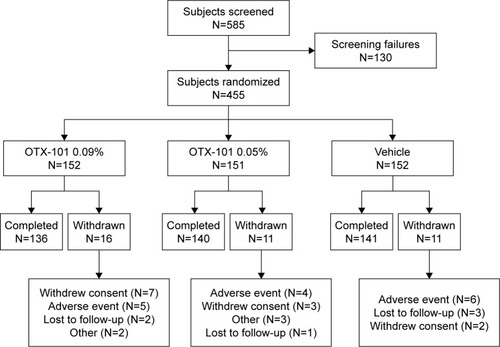Figures & data
Table 1 Subject demographic characteristics (ITT population)
Figure 3 The mean CFB in total conjunctival lissamine green staining scores by study visit is presented for the vehicle group (open squares), OTX-101 0.05% group (light blue diamonds), and OTX-101 0.09% group (dark blue circles).
Abbreviations: CFB, change from baseline; SE, standard error.

Figure 4 The mean CFB in total corneal fluorescein staining scores by study visit is presented for the vehicle group (unshaded bars), OTX-101 0.05% group (light blue shading), and OTX-101 0.09% group (dark blue shading).
Abbreviations: CFB, change from baseline; SE, standard error.

Figure 5 Schirmer’s tear test responders.

Table 2 Safety summary of common ocular and non-ocular treatment-emergent adverse events (safety population)
Table 3 Subject’s assessment of the comfort/tolerability of the study medication (safety population)


